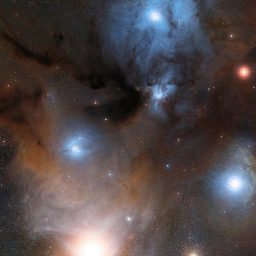Coffee talks
Friday 14/02/2020 @ 11:30, Sala riunioni quarto piano
Giovanni Sabatini (University of Bologna / IRA-INAF), "Unraveling the chemical complexity of high-mass star-forming regions"
"Timon, ever wonder what those sparkly dots are up there?" "Pumbaa, I don't wonder; I know!!" "Oh. What are they?" "They're fireflies. Fireflies that, uh... got stuck up in that big bluish-black thing." Looking at the night sky each of has probably wondered at least once, what "those sparkly dots are up there". Today, we know that these dots are stars, which during the course of their life greatly influence their surroundings also on large scales. In particular, high-mass stars (i.e. M>8Mo) have a critical impact on the physical and chemical conditions of the interstellar medium of a galaxy. They create and disseminate the vast majority of heavy elements, stir, heat and ionize the gas in their environment, and dominate the energy budget even on galactic scales. Although progress has been made in recent years, there are still many fundamental questions that remain open concerning the formation process and the evolution of high-mass stars, mainly because the timescales are short and much of their early life takes place deeply embedded in the molecular clouds. In this talk, I will present the recent results obtained during my PhD project. I modelled the chemical evolution of a collapsing molecular cloud in which, at some point, a massive star is formed. The chemistry of the cloud is described by coupling the KROME-package with a state-of-the-art network containing chemical reactions from the most updated public databases. The final goal of this project is to identify new "chemical clocks" to indirectly quantify what is impossible to observe even with the most advanced telescopes, namely the timescale and the duration of the various stages in the formation process of massive stars.

